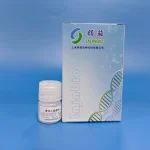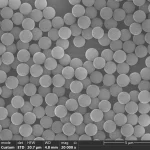Comparative Analysis of Polystyrene Microspheres and Polystyrene Carboxyl Microspheres extraction of rna
Comparative Evaluation of the Application of Polystyrene Microspheres and Polystyrene Carboxyl Microspheres in Biotechnology – Concentrating On Nucleic Acid Extraction.
(LNJNbio Polystyrene Microspheres)
In the field of modern-day biotechnology, microsphere materials are commonly utilized in the extraction and filtration of DNA and RNA due to their high specific surface, great chemical stability and functionalized surface properties. Among them, polystyrene (PS) microspheres and their derived polystyrene carboxyl (CPS) microspheres are one of both most extensively examined and applied materials. This post is offered with technical support and information evaluation by Shanghai Lingjun Biotechnology Co., Ltd., intending to systematically compare the performance distinctions of these 2 types of products in the procedure of nucleic acid extraction, covering essential indicators such as their physicochemical buildings, surface area alteration ability, binding effectiveness and recuperation price, and illustrate their appropriate situations with experimental data.
Polystyrene microspheres are uniform polymer fragments polymerized from styrene monomers with excellent thermal security and mechanical strength. Its surface is a non-polar structure and generally does not have active functional teams. Consequently, when it is straight used for nucleic acid binding, it requires to rely on electrostatic adsorption or hydrophobic activity for molecular fixation. Polystyrene carboxyl microspheres present carboxyl functional groups (– COOH) on the basis of PS microspheres, making their surface capable of more chemical combining. These carboxyl teams can be covalently adhered to nucleic acid probes, proteins or various other ligands with amino teams with activation systems such as EDC/NHS, thereby accomplishing extra stable molecular addiction. As a result, from a structural viewpoint, CPS microspheres have more advantages in functionalization potential.
Nucleic acid extraction generally includes actions such as cell lysis, nucleic acid launch, nucleic acid binding to solid phase providers, cleaning to get rid of impurities and eluting target nucleic acids. In this system, microspheres play a core role as solid stage service providers. PS microspheres generally rely upon electrostatic adsorption and hydrogen bonding to bind nucleic acids, and their binding efficiency is about 60 ~ 70%, but the elution efficiency is low, just 40 ~ 50%. On the other hand, CPS microspheres can not only use electrostatic effects but also attain even more strong addiction through covalent bonding, lowering the loss of nucleic acids during the cleaning process. Its binding effectiveness can reach 85 ~ 95%, and the elution efficiency is likewise boosted to 70 ~ 80%. Furthermore, CPS microspheres are additionally considerably much better than PS microspheres in terms of anti-interference capacity and reusability.
In order to verify the performance distinctions in between the two microspheres in actual procedure, Shanghai Lingjun Biotechnology Co., Ltd. carried out RNA extraction experiments. The speculative examples were stemmed from HEK293 cells. After pretreatment with conventional Tris-HCl barrier and proteinase K, 5 mg/mL PS and CPS microspheres were utilized for extraction. The outcomes showed that the average RNA yield drawn out by PS microspheres was 85 ng/ ÎźL, the A260/A280 ratio was 1.82, and the RIN value was 7.2, while the RNA return of CPS microspheres was boosted to 132 ng/ ÎźL, the A260/A280 ratio was close to the excellent value of 1.91, and the RIN value got to 8.1. Although the procedure time of CPS microspheres is slightly longer (28 mins vs. 25 mins) and the price is greater (28 yuan vs. 18 yuan/time), its removal quality is significantly improved, and it is better for high-sensitivity detection, such as qPCR and RNA-seq.
( SEM of LNJNbio Polystyrene Microspheres)
From the point of view of application scenarios, PS microspheres are suitable for massive screening projects and initial enrichment with reduced demands for binding uniqueness as a result of their affordable and straightforward operation. Nevertheless, their nucleic acid binding capability is weak and easily influenced by salt ion concentration, making them unsuitable for lasting storage space or repeated use. On the other hand, CPS microspheres are suitable for trace sample removal due to their abundant surface useful teams, which promote more functionalization and can be made use of to create magnetic bead discovery packages and automated nucleic acid removal systems. Although its prep work procedure is reasonably complicated and the expense is fairly high, it reveals stronger versatility in scientific study and clinical applications with strict requirements on nucleic acid extraction effectiveness and pureness.
With the fast advancement of molecular diagnosis, gene editing, liquid biopsy and various other fields, higher needs are positioned on the effectiveness, pureness and automation of nucleic acid extraction. Polystyrene carboxyl microspheres are slowly replacing standard PS microspheres as a result of their excellent binding efficiency and functionalizable qualities, coming to be the core choice of a new generation of nucleic acid removal products. Shanghai Lingjun Biotechnology Co., Ltd. is also continuously optimizing the particle size distribution, surface area thickness and functionalization effectiveness of CPS microspheres and establishing matching magnetic composite microsphere products to satisfy the requirements of medical diagnosis, scientific research institutions and industrial consumers for top notch nucleic acid extraction solutions.
Distributor
Our products are widely used in many fields, such as medical testing, genetic testing, university research, genetic breeding and more. We not only provide products but can also undertake OEM, ODM, and other needs. If you need extraction of rna, please feel free to contact us at sales01@lingjunbio.com.
All articles and pictures are from the Internet. If there are any copyright issues, please contact us in time to delete.
Inquiry us

